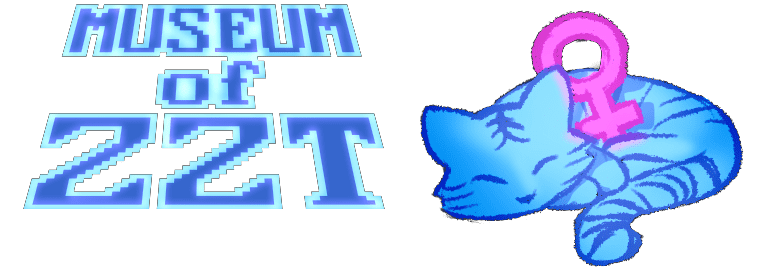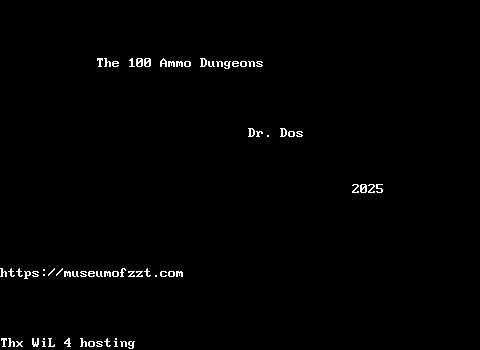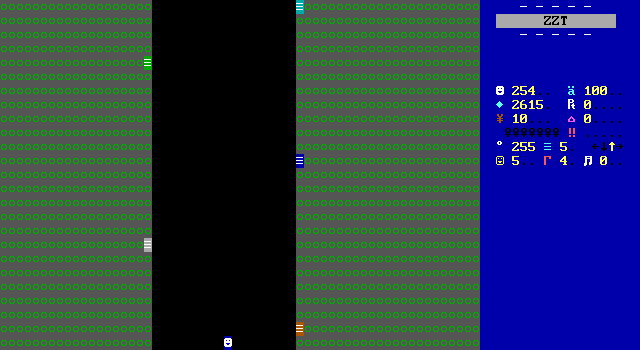
Scott gets to freely roam the hospital afterwards. The visuals are certainly a unique look, using doors for walls. The circles stand out quite a bit in contrast to the usual fades. It's something I can't recall seeing before, and something to remember as an easy way to add a little texture to boards in the future. Though a little discretion might be advisable instead of making the entire board out of them. Using doors for walls obviously has the disadvantage of making a sound and message when bumped, but so does water. It only really means no using green keys, and given how many other things this game isn't using, that shouldn't be a problem.
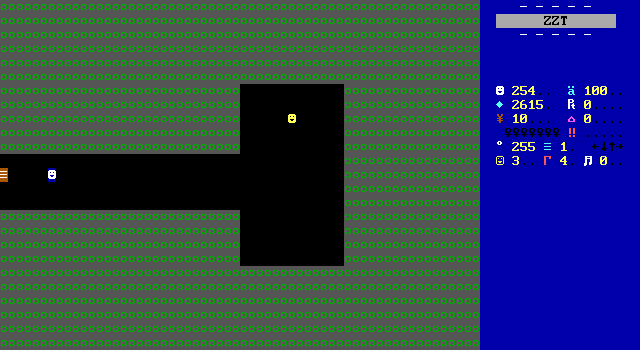
The hospital is I suppose the game's "dungeon". Scott gets to go exploring, which could be exciting if every room in the hospital didn't look like this. It's very sterile. (Fitting.)
This specific board is the most notable of the hospital's rooms. Touching the object seems to do nothing, and given the sparseness of it all, got me to turn around, only for the object to then wake up and start calling for help. The game may have already peaked with Tori's unsettling visit, but Miller is still capable of some welcome surprises.
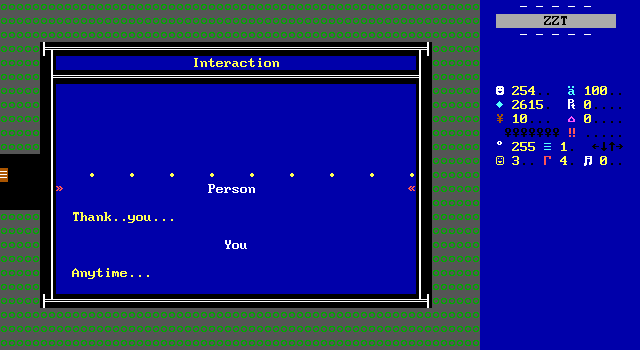
This woman is Edna, but she says the doctors jokingly called her "Crazed Edna"! I really thought with the fantasy tutorial being discarded, that the opening dream sequence wasn't going to come back to relevance. It's an unexpected follow through on something that seemed so out of left field to the story.
Edna explains that she had a dream that a boy named Scott would save her. Scott says that he too had a dream of "Crazy Edna", and deliberately makes no mention of the "jumping off a bridge" thing. Edna suggests that they team up as they both want to put a stop to Tori and Scott finds himself with a second party member. At the very least, this means a bit more seasoning to the currently bland RPG component of the game.
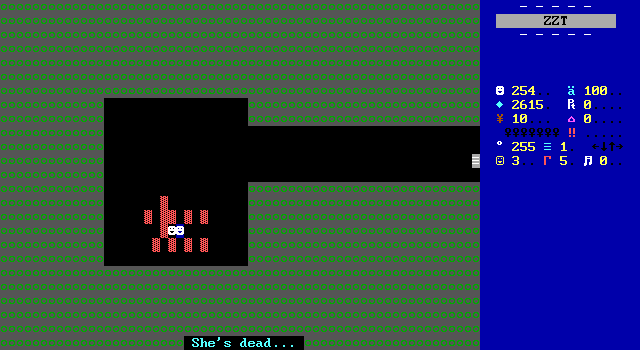
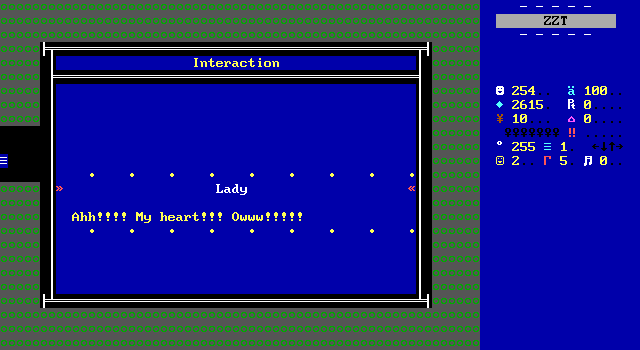
The other rooms contain dead bodies that can't be interacted with or people who can be interacted with, only to die immediately afterwards. None of these people are Scott's mother, nor do they use the same color as her to maybe quietly tell players what's happened to her even if Scott doesn't get to react.
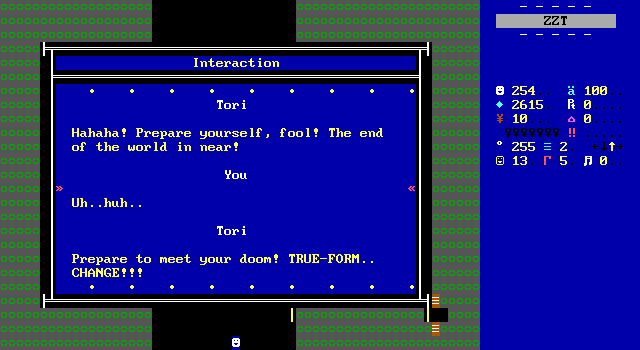
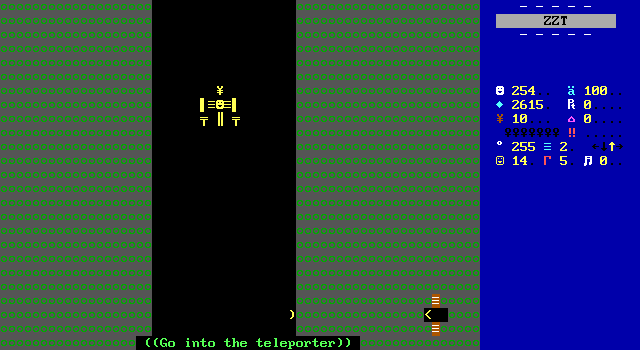
Going deeper down the hallway, Tori stands in the center, confronting Scott with a new challenge to fight against her "true form", consisting of a large yellow body with some antennae on top. Oddly, to start this fight the player is directed to go through a transporter and into a passage themselves, rather than utilizing the player clone trick used repeatedly in early scenes.
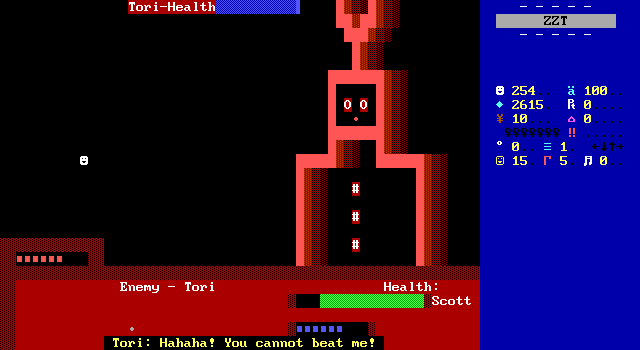
Now we're cooking. Look at this! What an incredible piece of art. Big Tori with her antennae and her nice buttoned shirt. Pay no mind to the fact that she's red now instead of yellow.
The fight is no different than before, save for Tori have a new "Soul Steal" attack added to her fixed script. On the first attempt it automatically misses, with more buildup the second time thanks to a timer displayed in the bottom of the screen counting down to its next use. When it hits Scott ...it does nothing! Tori is good at killing everyone but Scott apparently.
You may have also noticed that Edna isn't here! It's unclear whether the author changed their mind on Edna for story reasons, or simply couldn't figure out how to modify the engine to insert a second playable character. There were definitely plans for her to be here, as she has an object placed next to Scott at first and named as such. Yet there's no evidence of any attacks, let alone a timer for getting her turn or health bar. It's as if Miller did very first step to implementing Edna and then decided not to bother.
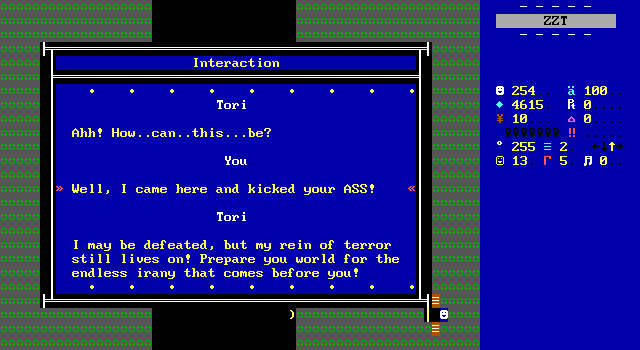
The game does return players to the previous board once Tori's been defeated. I suppose this method saves space over having to make a second copy for the post-fight sequences though this game is nowhere near large enough for that to matter.
And I have no idea if "irany" is supposed to be "tyranny" or "irony".
There's then a single board chase down another identical hallway and then another screen where Tori takes a stab at convincing Scott to join her.
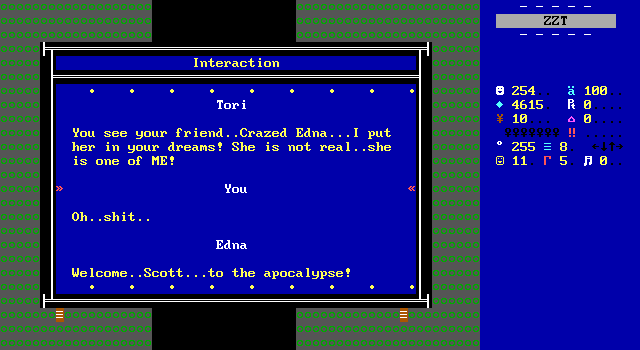
And then there's one last twist where Edna was actually a puppet of Tori's all along and now you have to fight the two of them!
Unlike the other alternate paths in the game that are quickly halted by game overs, this one actually does get to play out. If Scott fails to help Edna earlier, Tori's speech is adjusted to still reveal that the woman in his dreams was her own work, but throws in that she did not survive the process. An alternate version of the final fight removes Edna, yet both fights are functionally identical. The two share the same health pool, and the scripted attacks just change goes from "Tori punches, Edna psybeams, both of them slam you" to having all those attacks being done by Tori alone. The damage is the same, so there's no tactical advantage to saving/ignoring Edna.
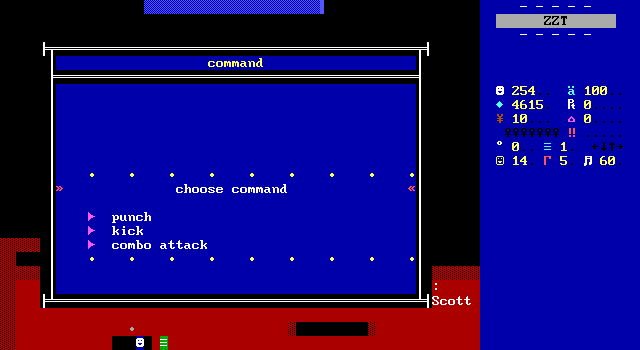
Scott receives a new attack for this fight. The combo attack which gets a new animation. It's also the correct choice as it never misses and it does three damage, making it the hardest hitting attack as well.
The RPG battles in After Pain Talks are surprisingly kind to the player. A rarity to begin with, especially in first time efforts which tend to come down to who misses fewer attacks.
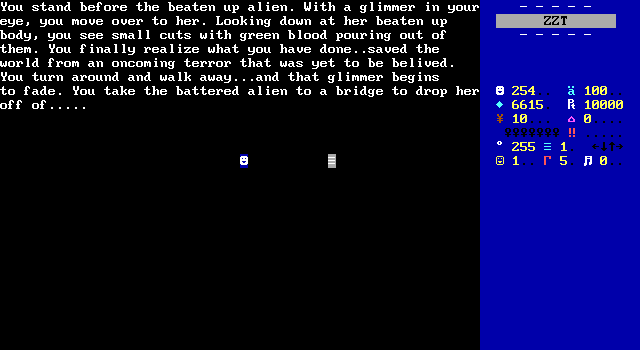
Winning the battle brings players to an ending screen, where Scott is confirmed to be fully victorious. I love the game coming full circle here with bridges. Just how much of the wacky dream at the start wound up being integrated into the events of the game is impressive. All Scott needs now is to find five bucks on his way home.
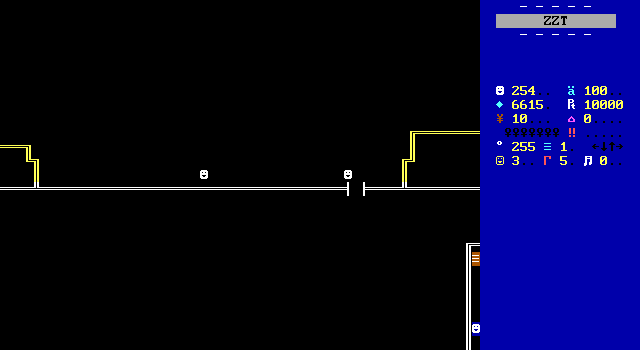
The ending consists of a very crude cutscene much like the one in the dream sequence. You get to watch as Scott shoves Tori's body in the river. Other than an object moving right and another falling down, the only animation here is the moon rising in the sky. I think it's the moon? The scene is not great at conveying things.

A sequel hook is dropped, just in case. While Miller did release some other worlds, After Pain Talks doesn't appear to have gotten any successor. A shame, as he seems like the kind of guy with a lot of unexpected ideas.
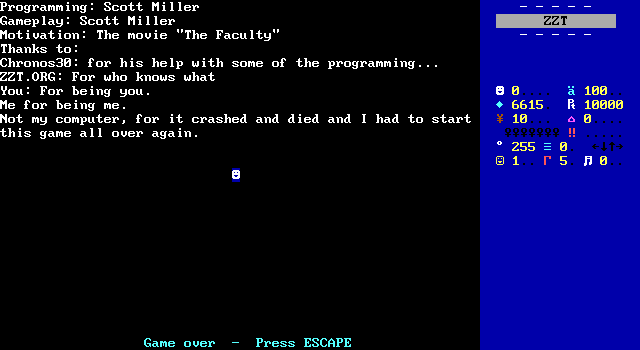
And finally, a credits board that's very much to the point. Turns out the whole game was based on the "The Faculty", a 1998 sci-fi horror movie whose name and trailer I vaguely recall. Brushing up on the synopsis, the similarities seem very slight. They both have an alien at school, and that's pretty much it. I can't imagine anyone who has seen the film getting any more out of Miller's creation than I did, and honestly doubt anyone would make the connection were it not explicitly spelled out here. Miller's work is his own take on an alien in disguise wreaking havoc as much as TearDragon's Atlantis had anything to do with a TV special about the lost continent.
The final screen mentions hardware failure leading to the game having to be restarted at one point. This might explain some of the odder choices, but not all of them. If there was an older backup, it would do a little to explain the home and playground sections of the game having more detail than the void-like town, line wall hospital exterior, and its green door interior. It still wouldn't explain the bizarre tutorial which really had no connection to anything.
Final Thoughts
But at least Miller didn't give up. After Pain Talks may not execute its ideas particularly well, but overall I really liked my time with it. Miller's strength lies in his writing, capturing a cool kid's (himself) daily life with all its ups and downs in a serious and believable manner. Scott feels more grounded in reality than your usual child protagonist that gets caught up in an adventure (at least before the soul sucking alien becomes a things). Old Kyle Lipschitz (Code Red) runs around with a gun shooting animals at the zoo. Fletcher Long (Coolness) goes to outer space thanks to finding a rocket ship hidden in a tree behind the secret lab in his backyard. Player (City Adventure) happens to live next to Nickelodeon Studios, an arcade, a child-friendly casino, and more. Scott sleeps in, forgets his homework, accidentally swears in front of a teacher, and tries to console his friend that's sad about moving. That's not a power fantasy. That's the sixth grade.
I mean, the multiple brawls and being so good at fighting that five stooges refuse to gang up on him, that's a bit power fantasy. But beyond these little "and then everybody clapped and the girl fell in love with me" moments, Scott's life is an interesting one. Miller repeatedly sets up possible turns for the game to take. Mom wants to talk to you after school and you've got a lengthy rap sheet of things she could potentially ground you for. Then every time you make your prediction of what will happen next, Miller pivots in an unexpected direction. That loaded day at school gives way to wondering if maybe this Tori thing was a mistake, to embracing it, to having your soul consumed. Tori's appearance at your home is a a huge moment for what the game could possibly be going for. Romance in ZZT is hard to come by, and generally feels very flat and forced. Here though, Scott behaves incredibly naturally, wanting a girlfriend, but quickly realizing something is up with her.
And all that without getting into how this kid has to juggle Tori with his mother being in a serious accident! I really hope this kid didn't have to go to school the next day.
The entire horror part of the game is one of the lesser interesting ways things could have gone. While the big reveal is certainly notable, it sweeps away much of the work Miller did to depict an otherwise believable kid's life. Everyday kid thrown into horrible situation is nothing to turn one's nose up at, but it pushes the game in a direction that has been been taken time and time again with the aforementioned Lipschitz and Lipschitz-likes in games that generally do it better.
The majority of the game is pre-hospital, and considerably more interesting thanks to how well Miller develops his little world. Afterwards it becomes a very typical alien-monster story with red fakes and RPG engines that quickly dismantle the game's very well-constructed depiction of an incredibly common ZZT environment and replace it with another common environment that has little to call its own. To take "My girlfriend is actually an alien who wants to kill me and everyone else" and have that be less interesting than "My girlfriend doesn't understand healthy boundaries, but I'm a kid so it's not like I do either" speaks to how well the latter was implemented that I'd rather more of that than the popcorn-flick fight the villain in the spooky hospital that the game turned into. After Pain Talks left me wanting to see more by Miller, and hoping that he recognizes his ability to turn mundane dramas into compelling games in one of them. I suppose only time will tell.
